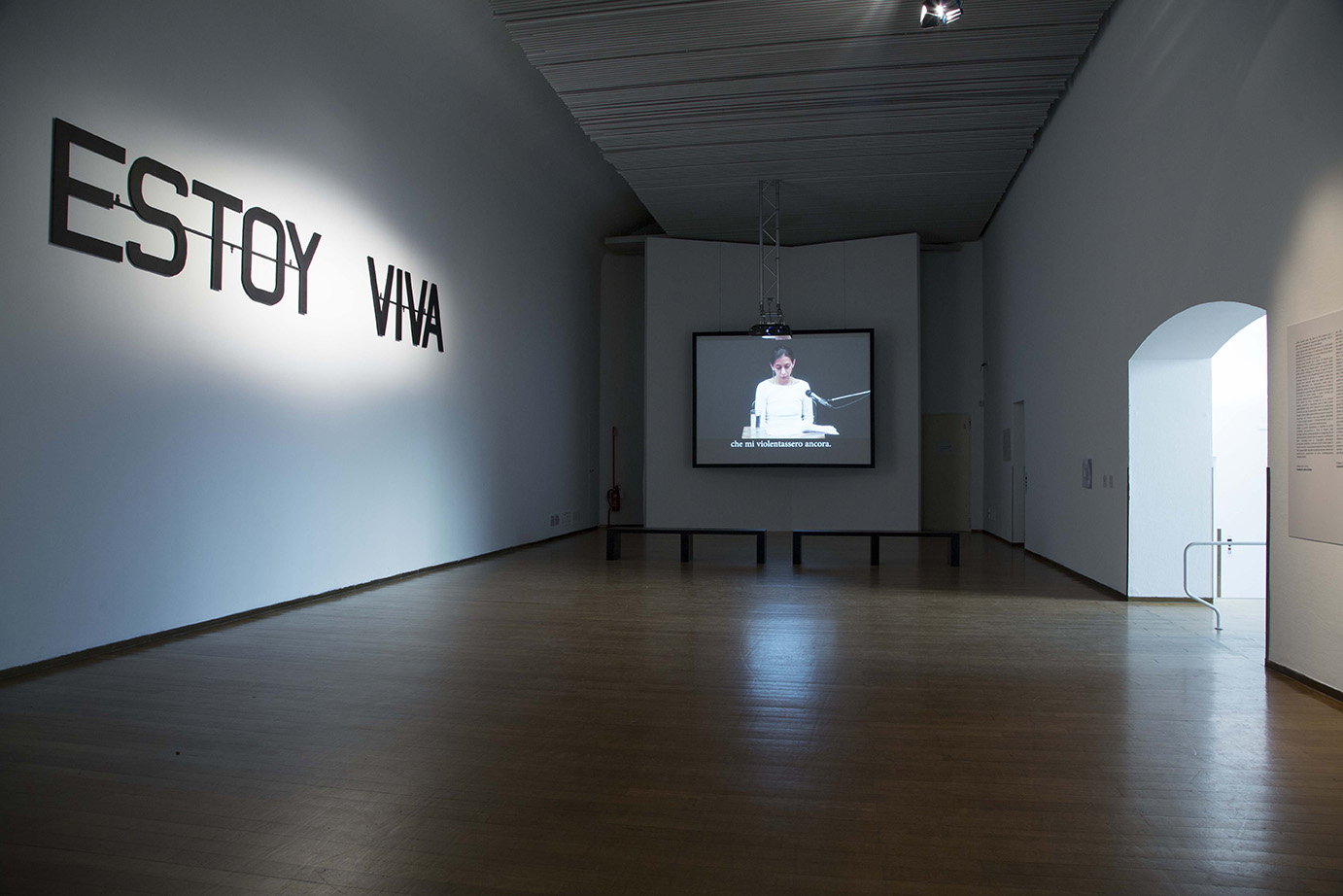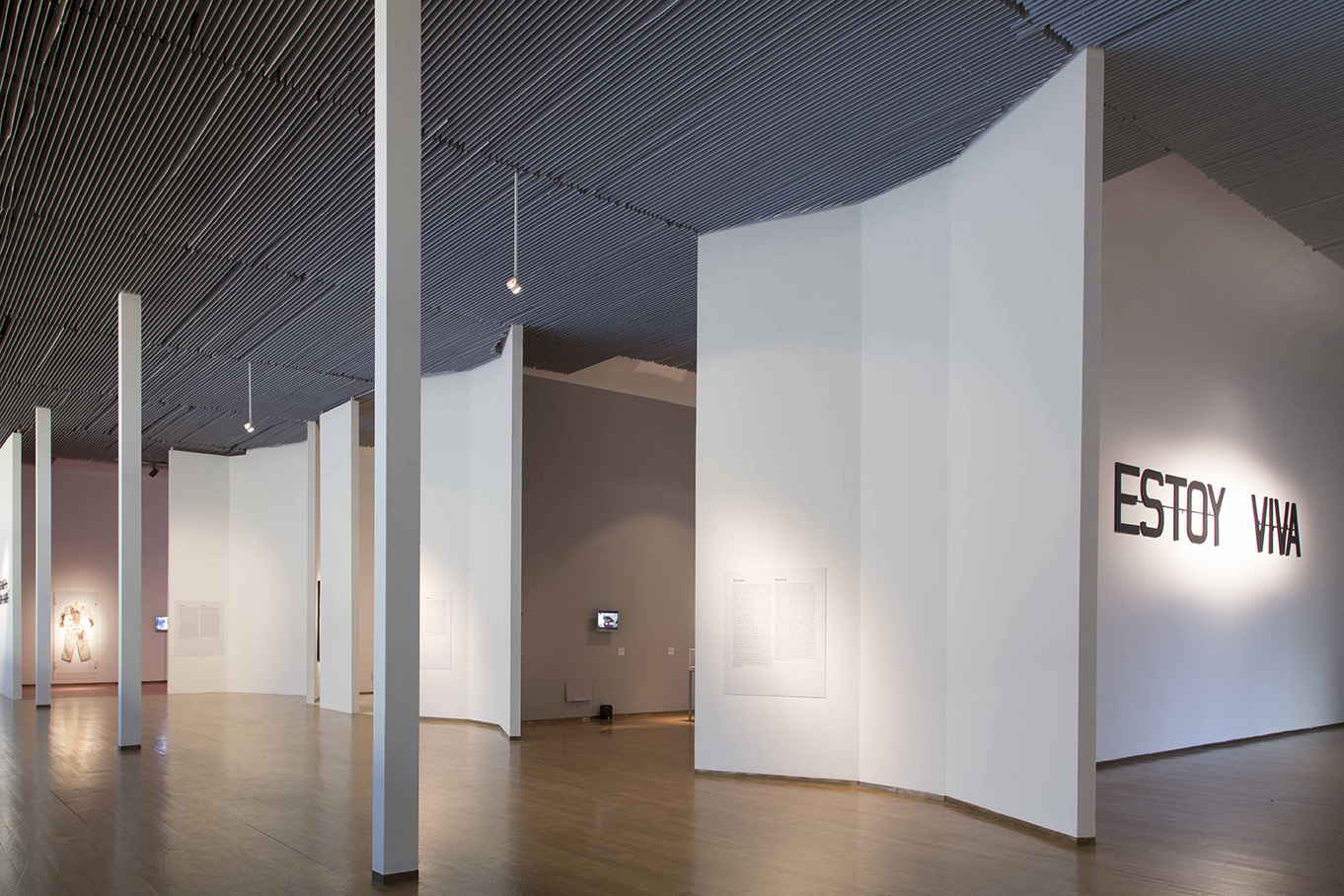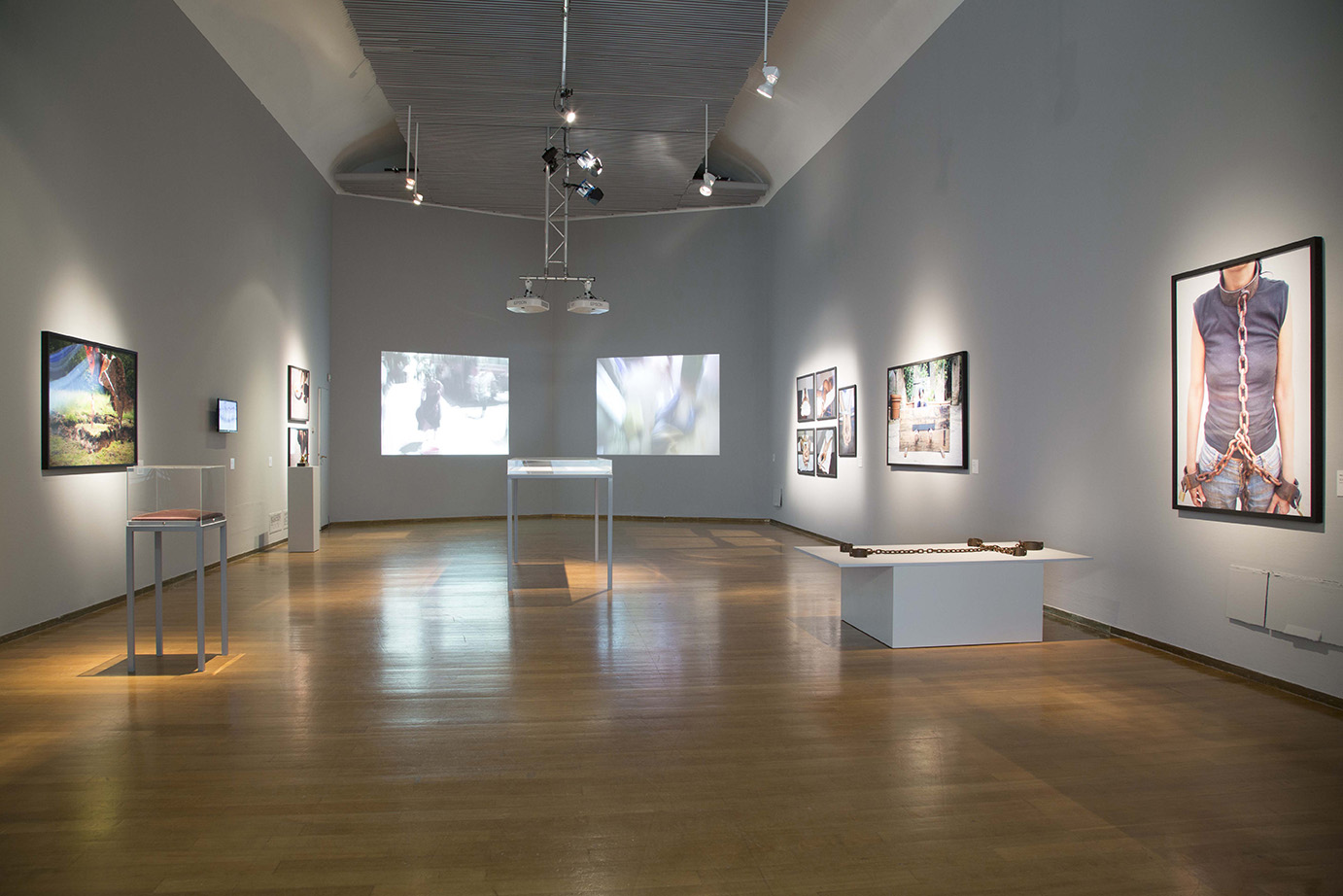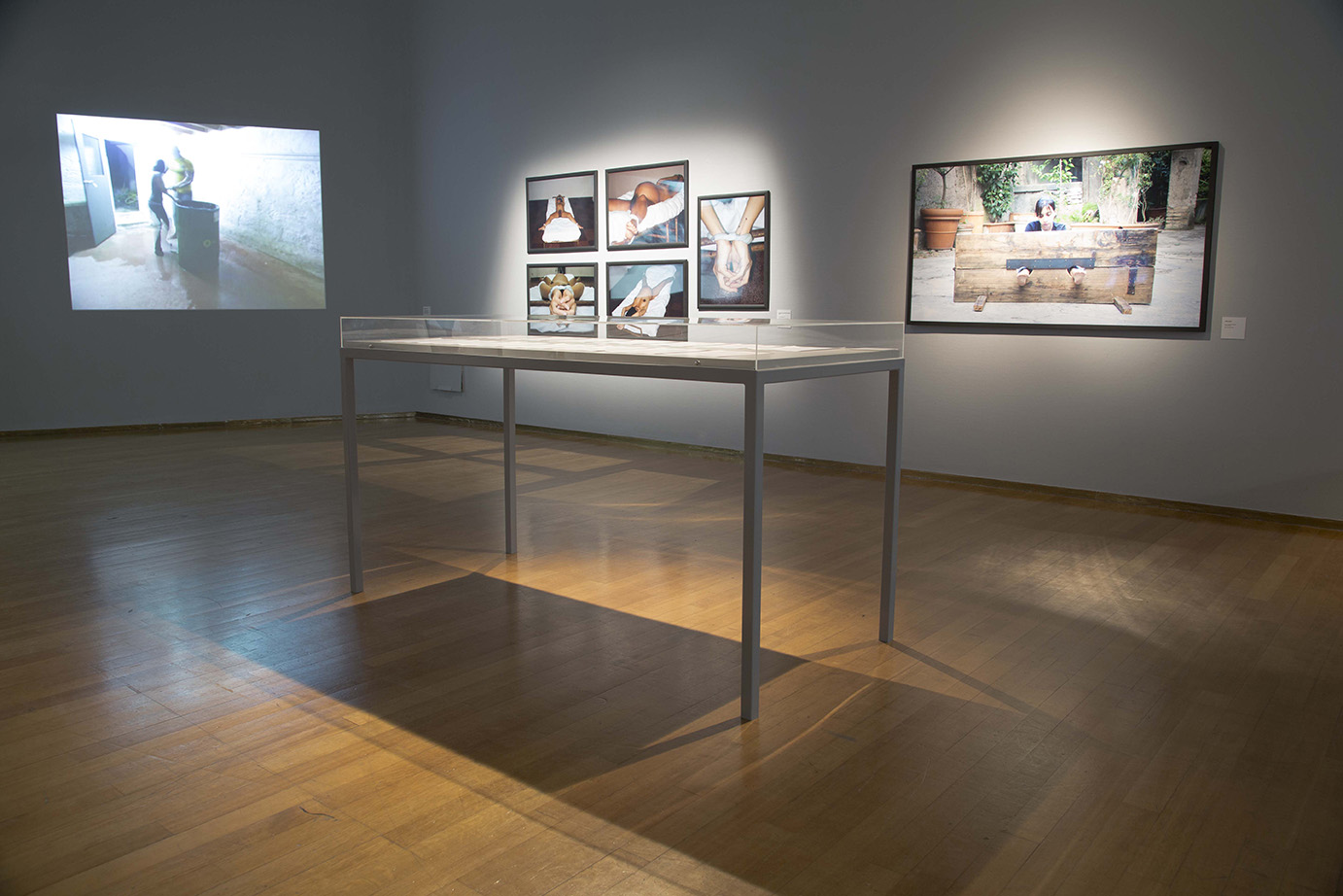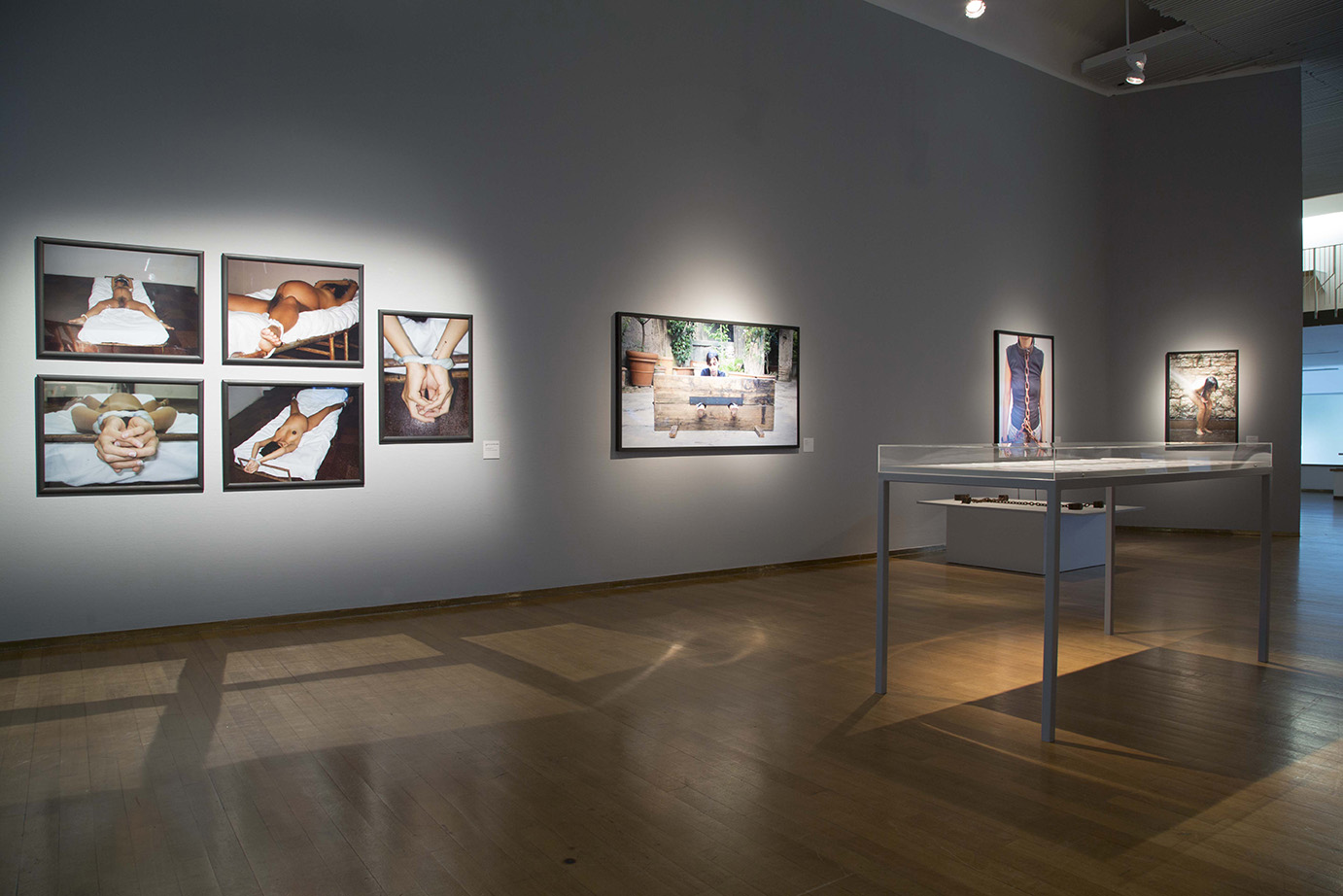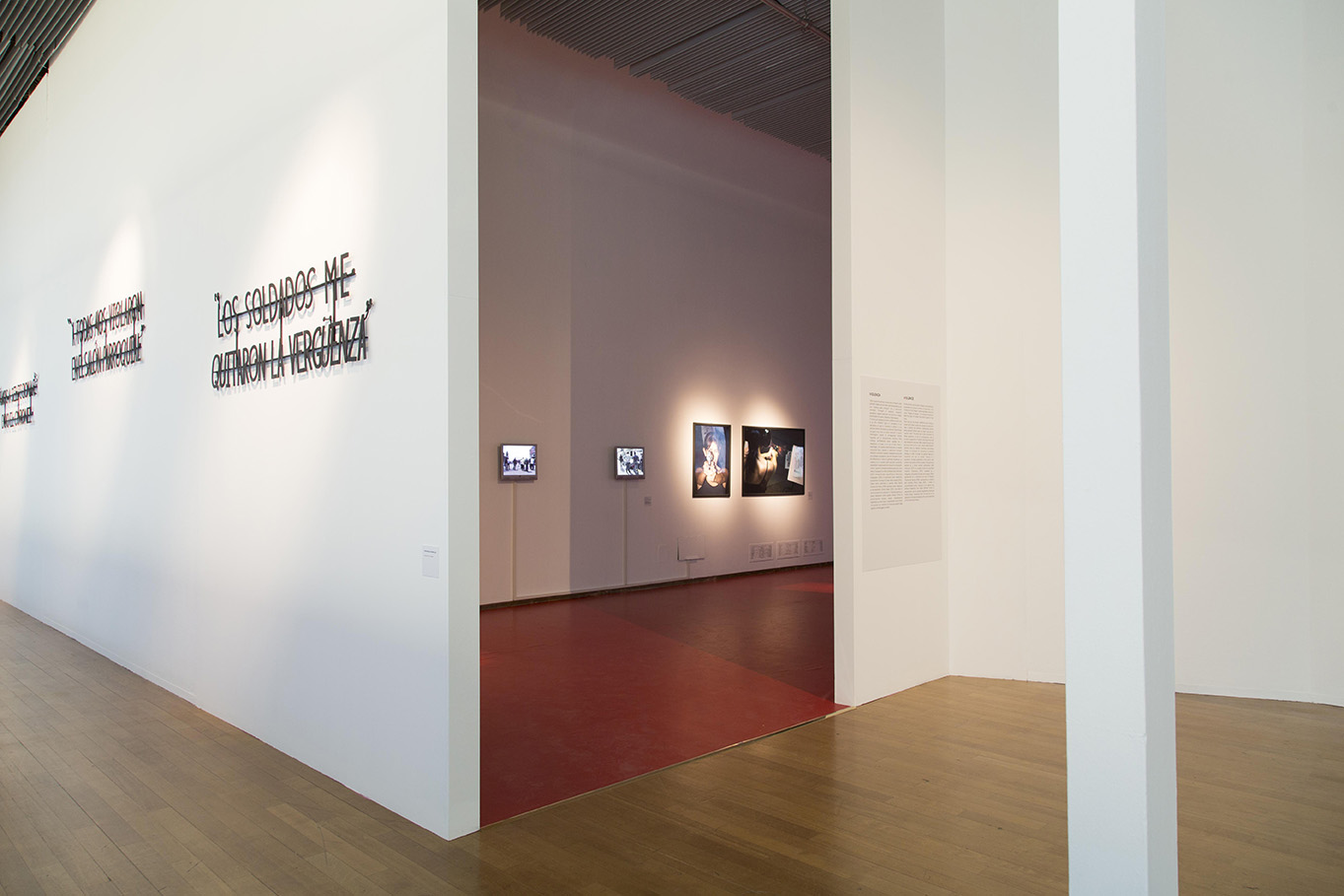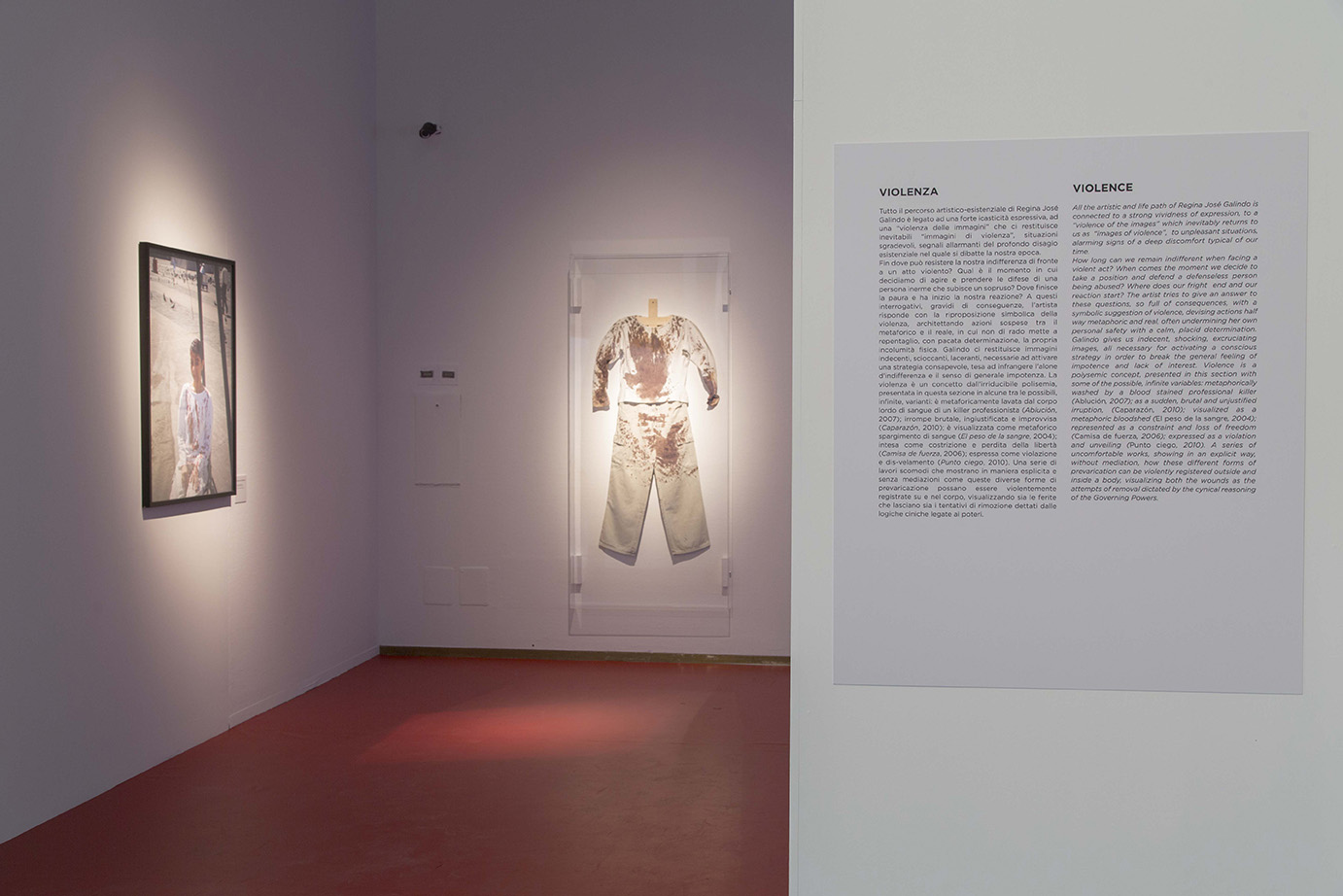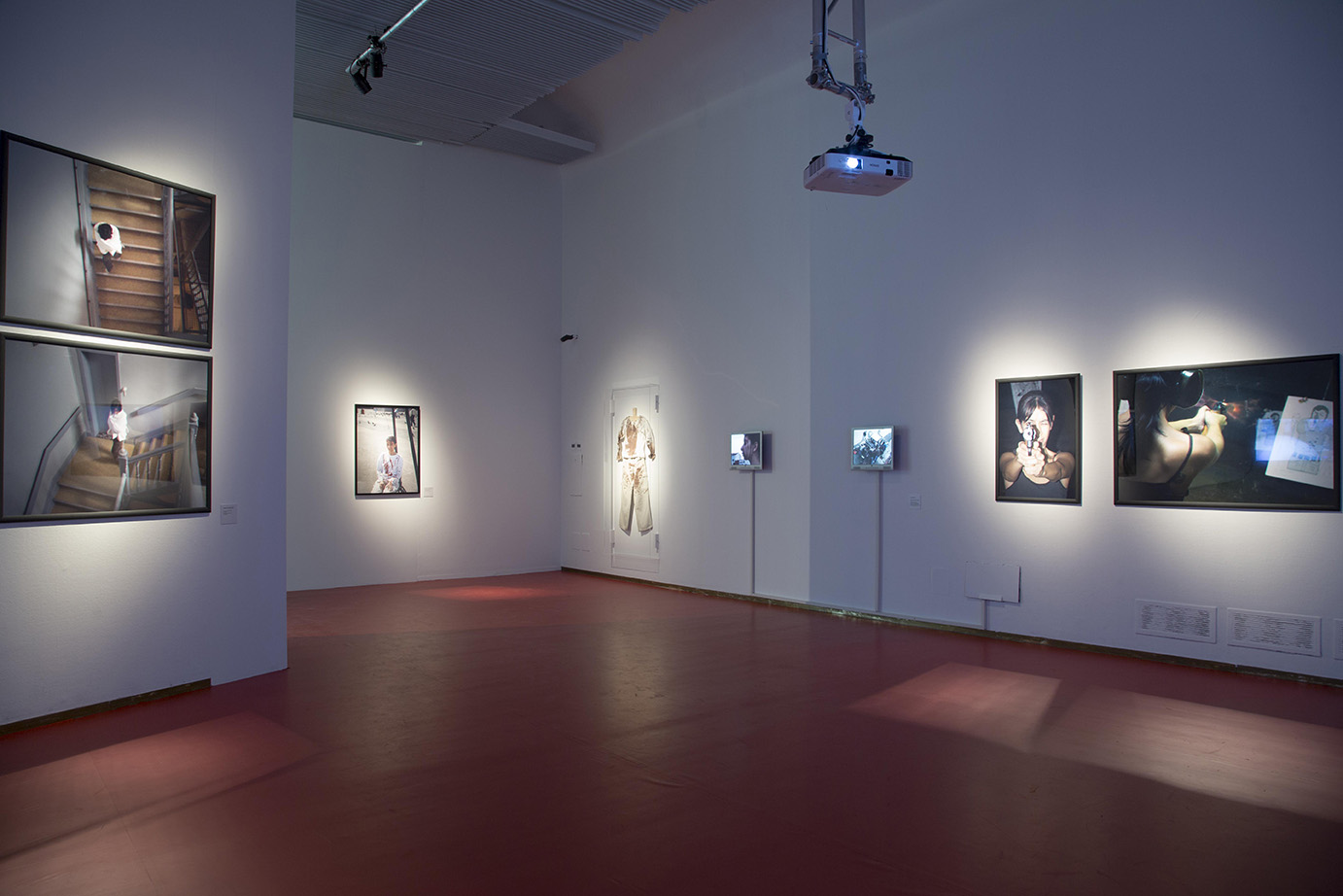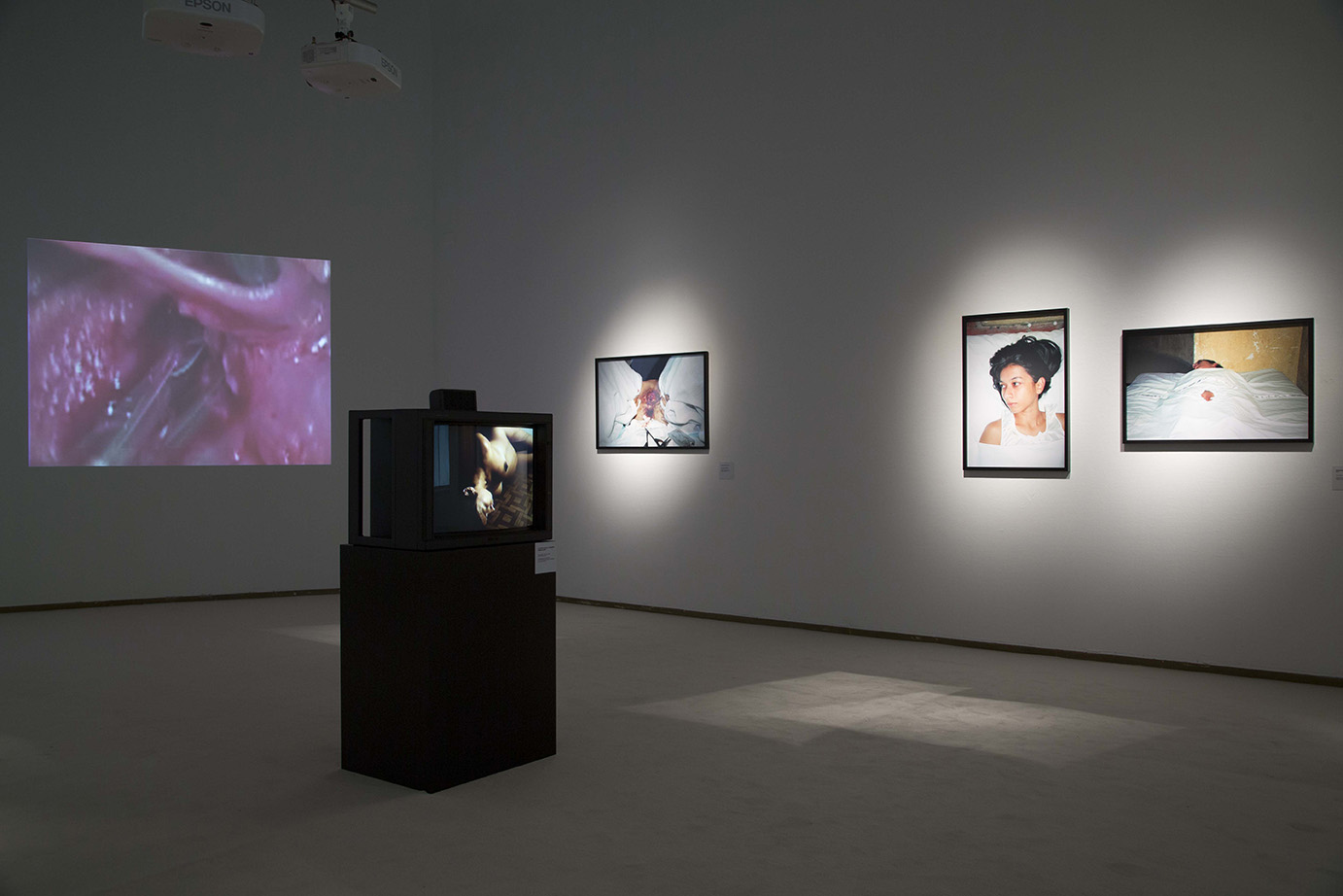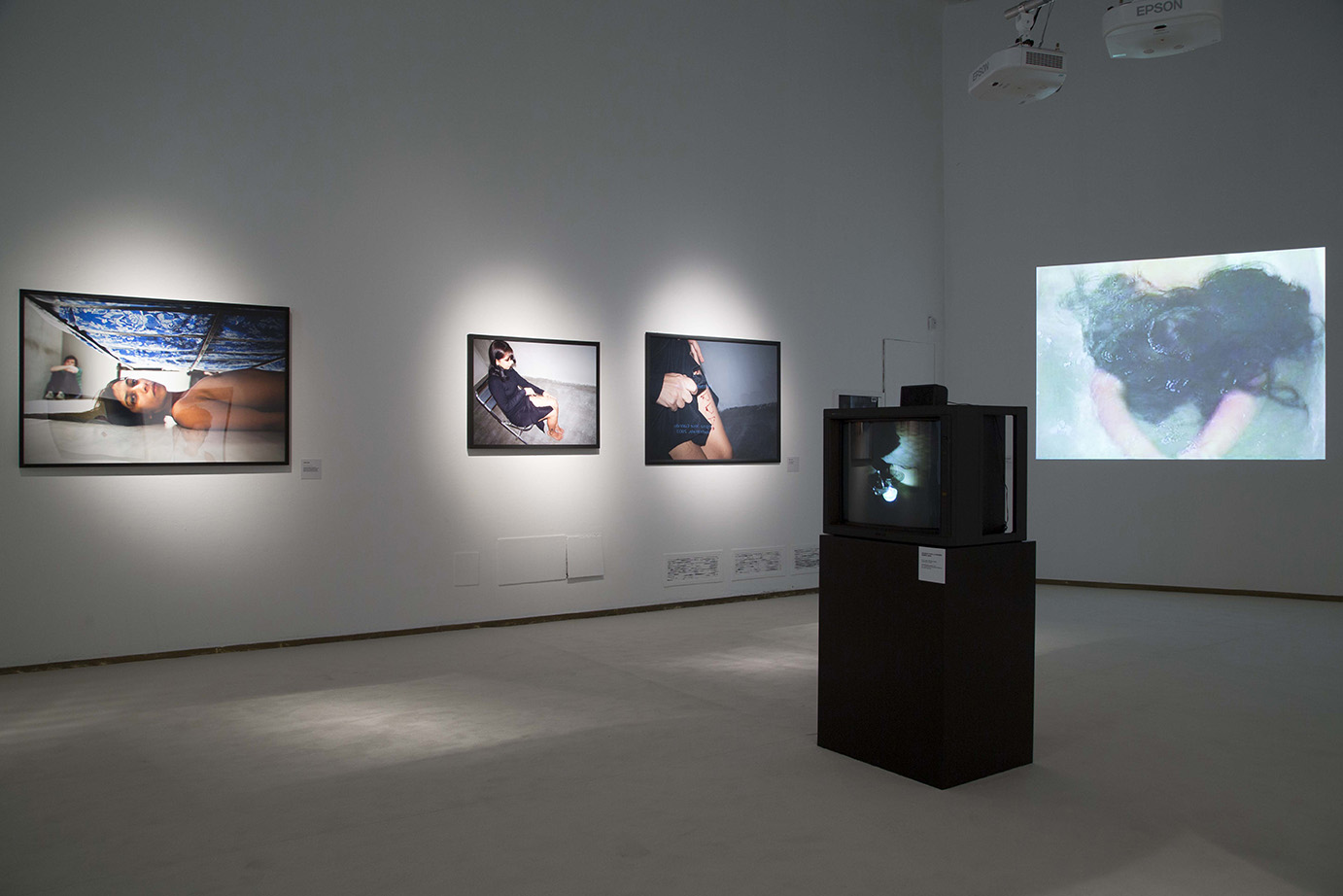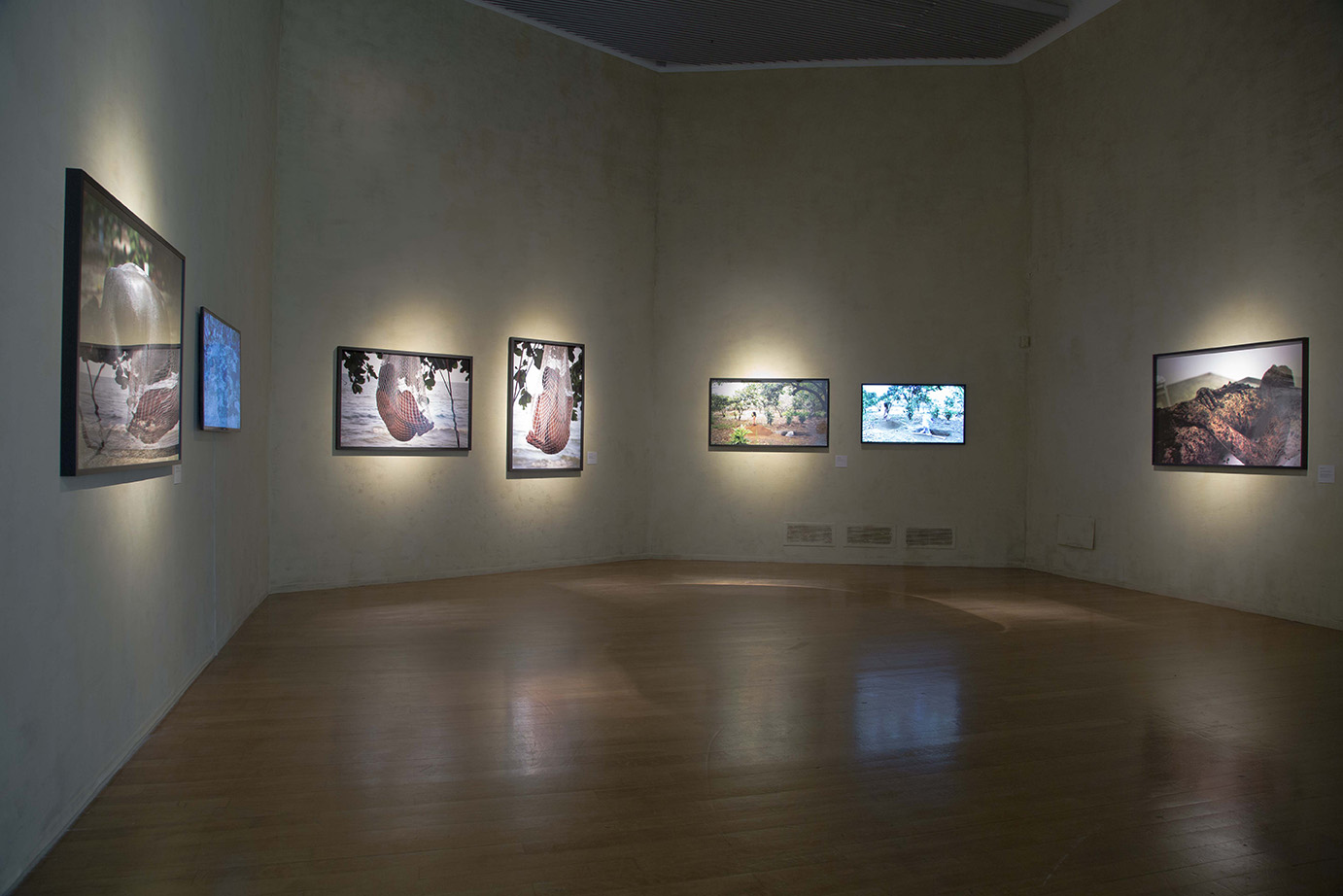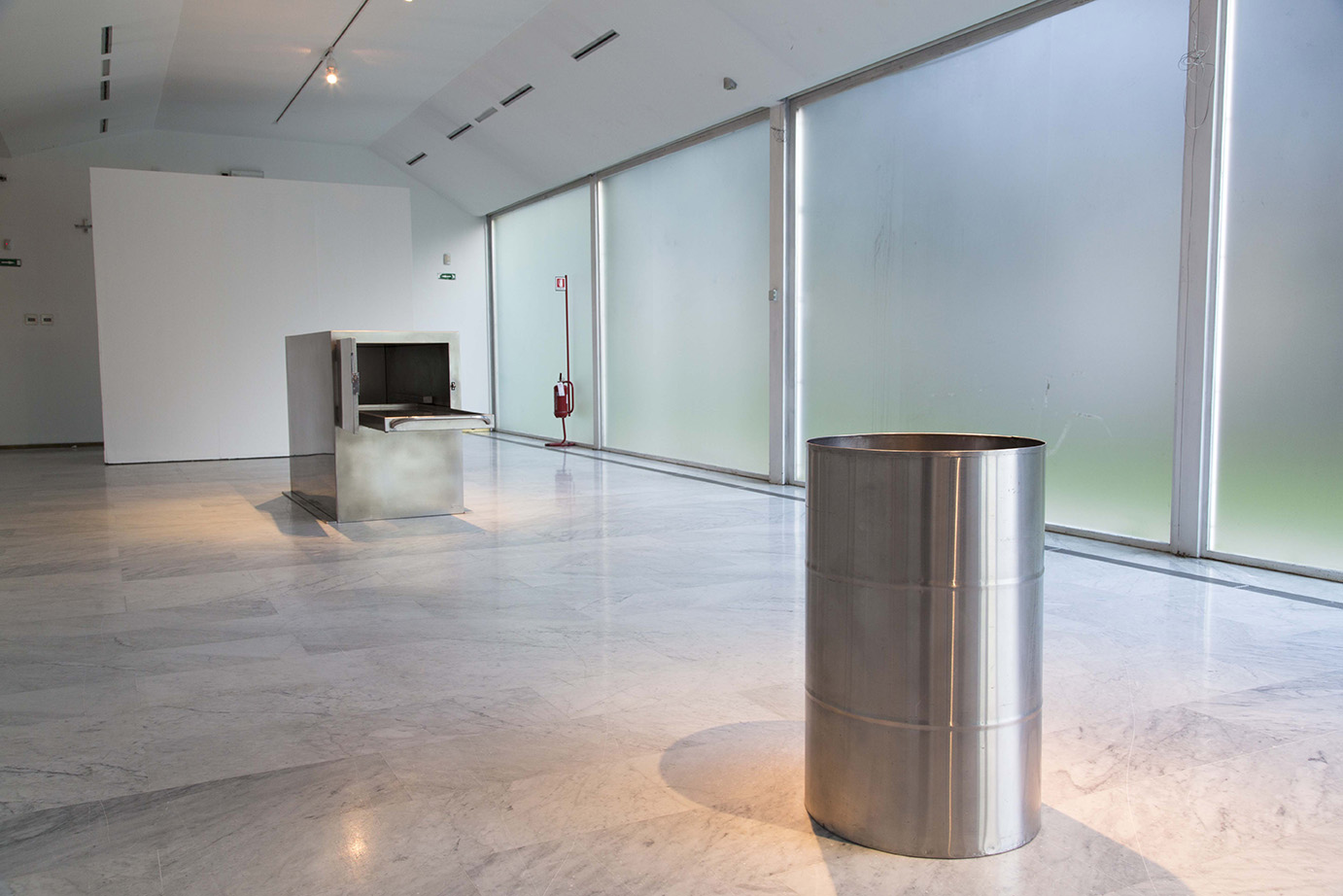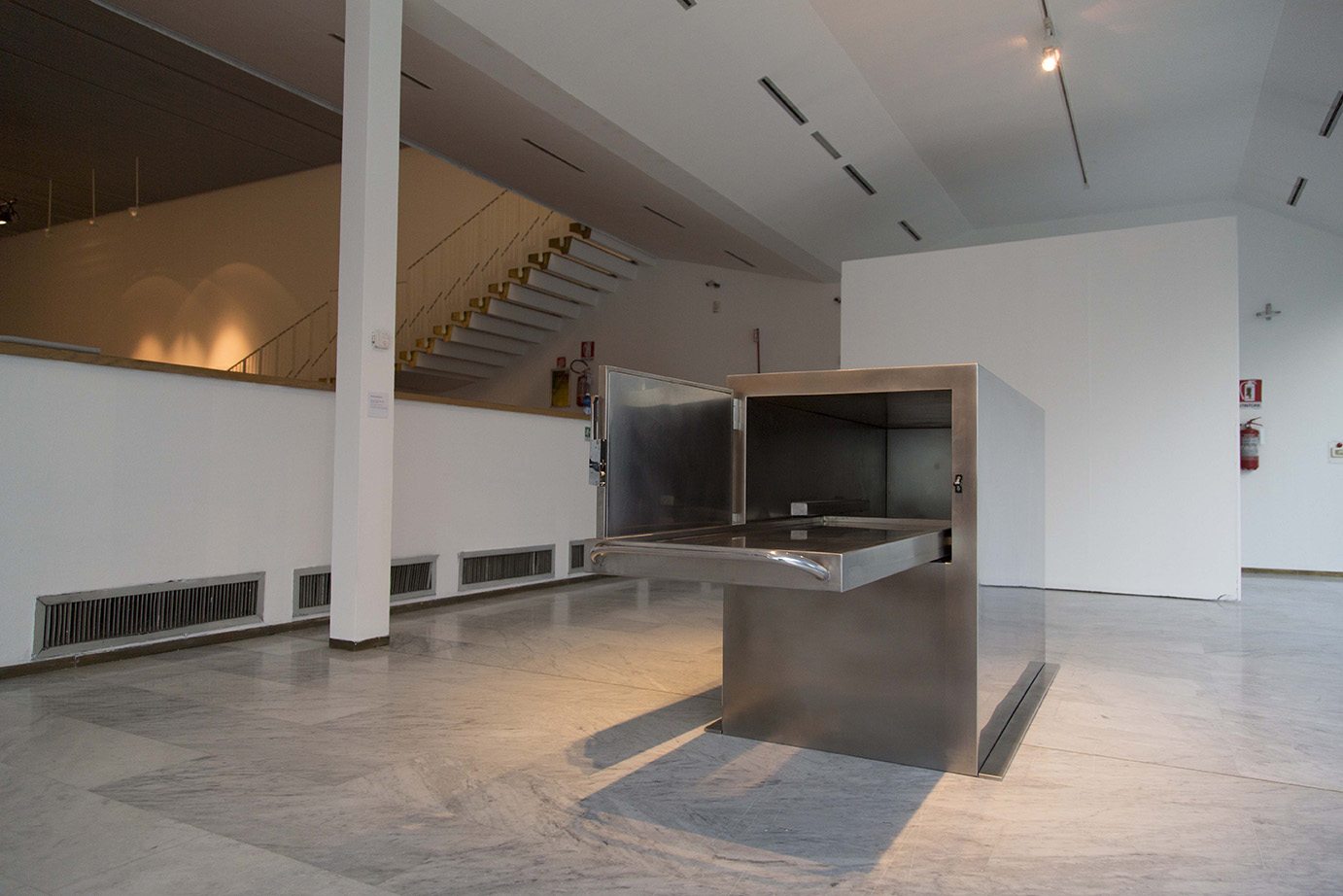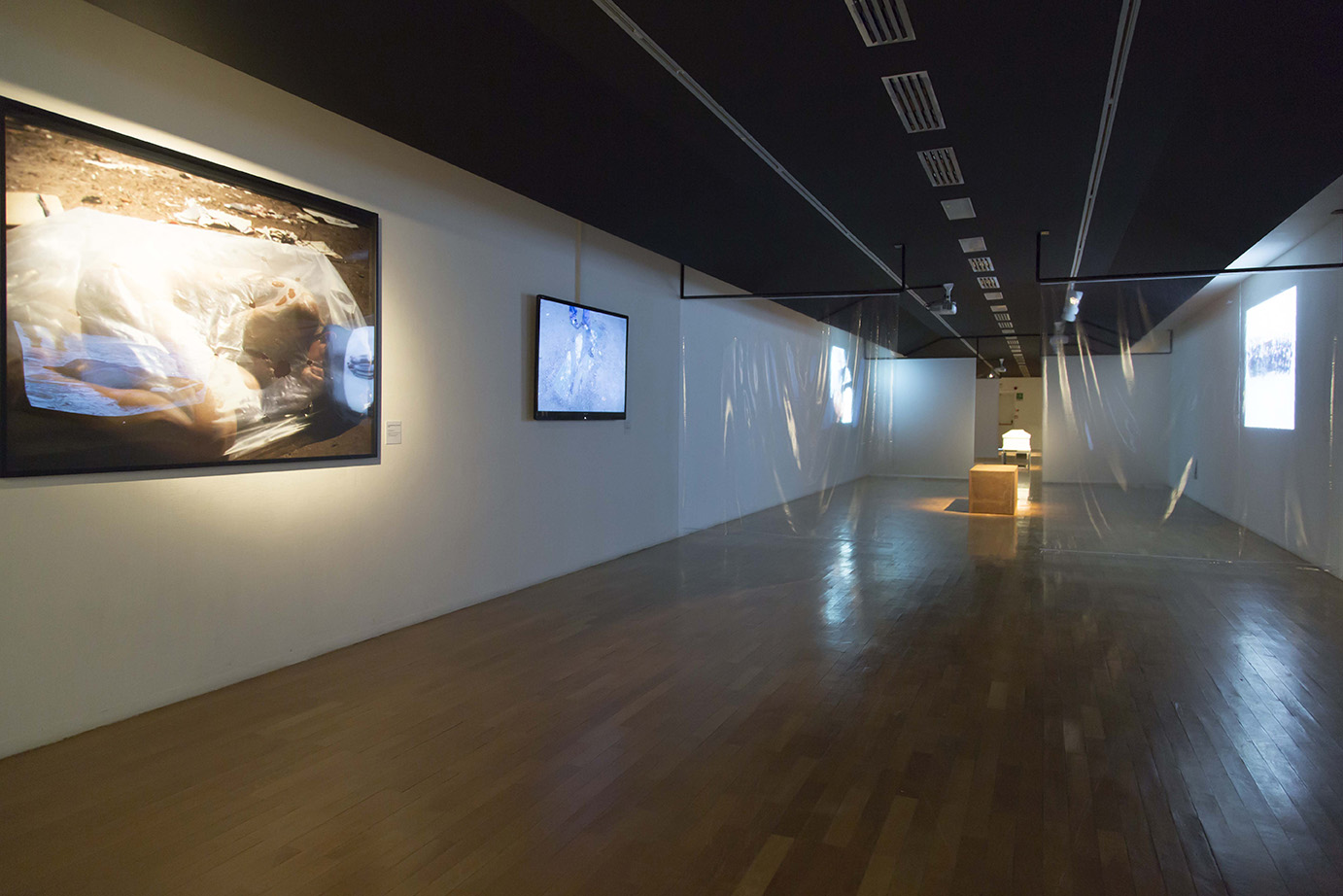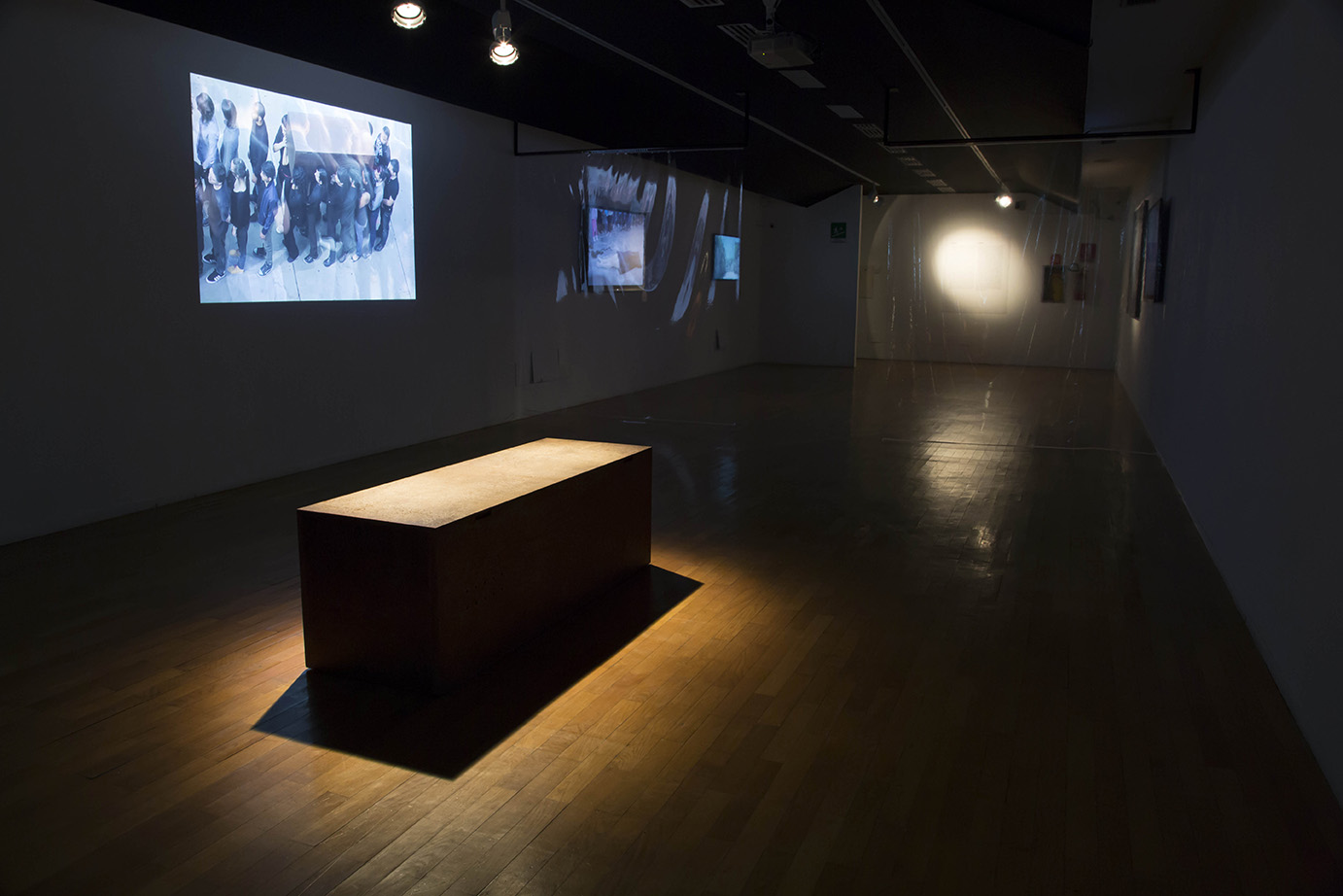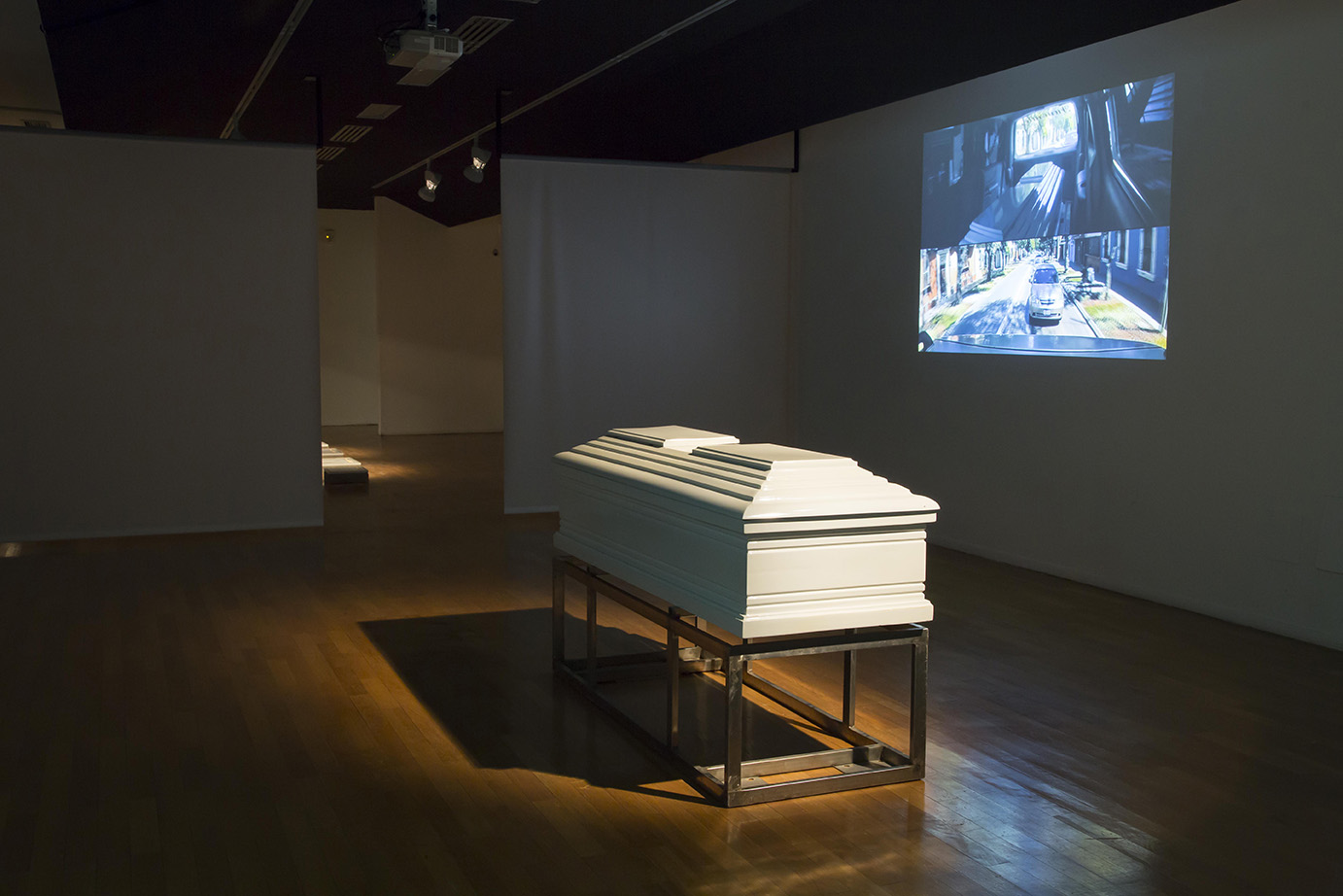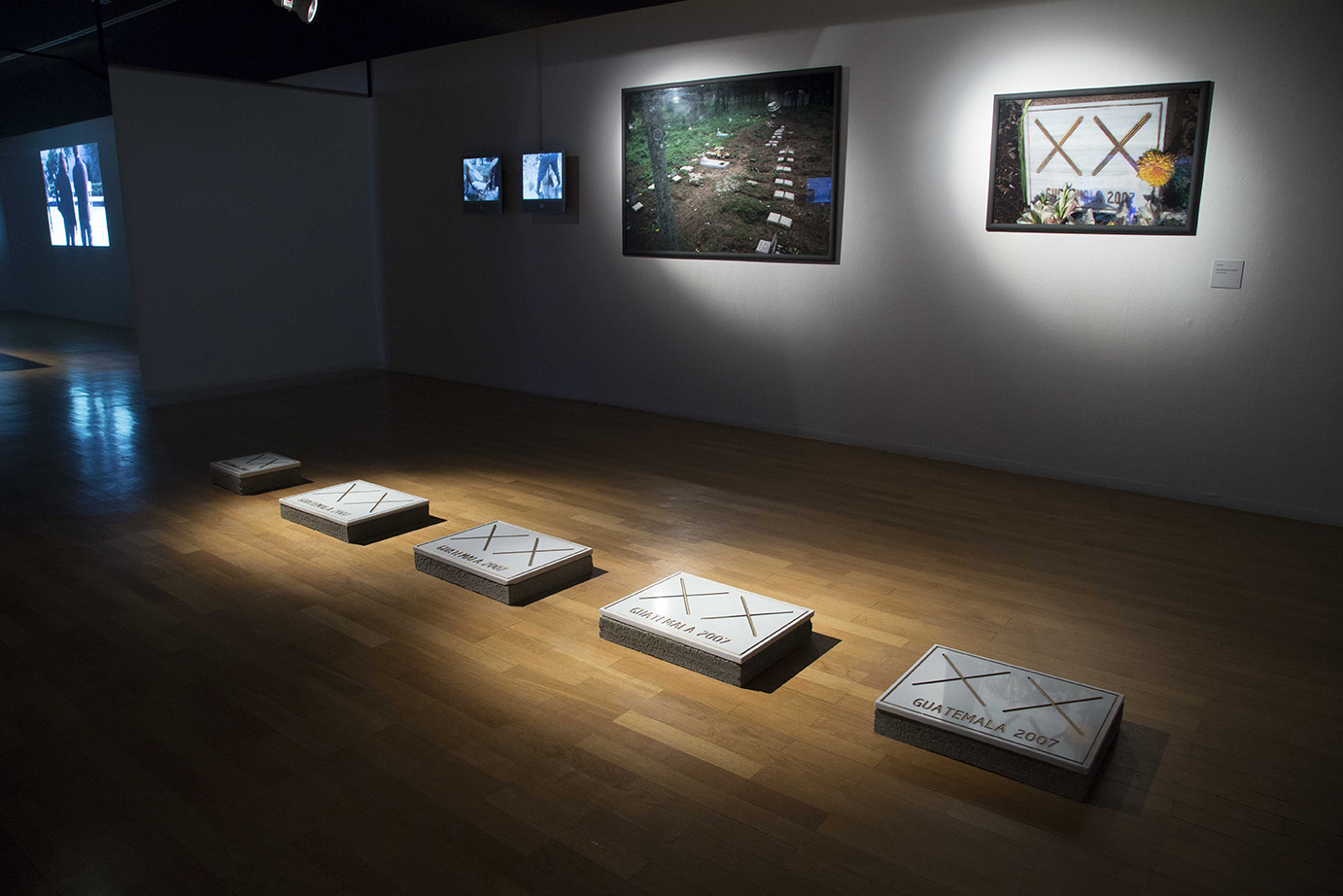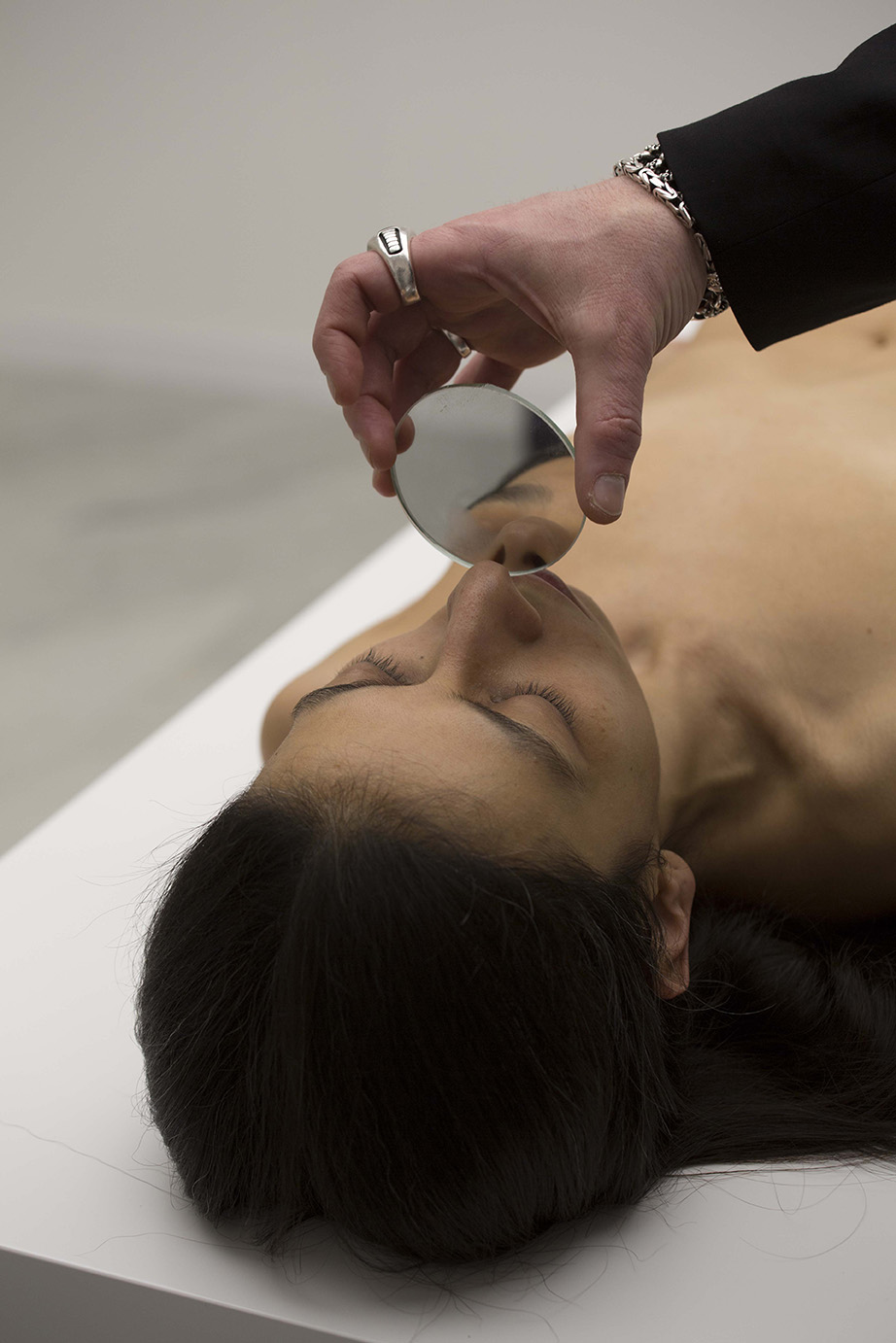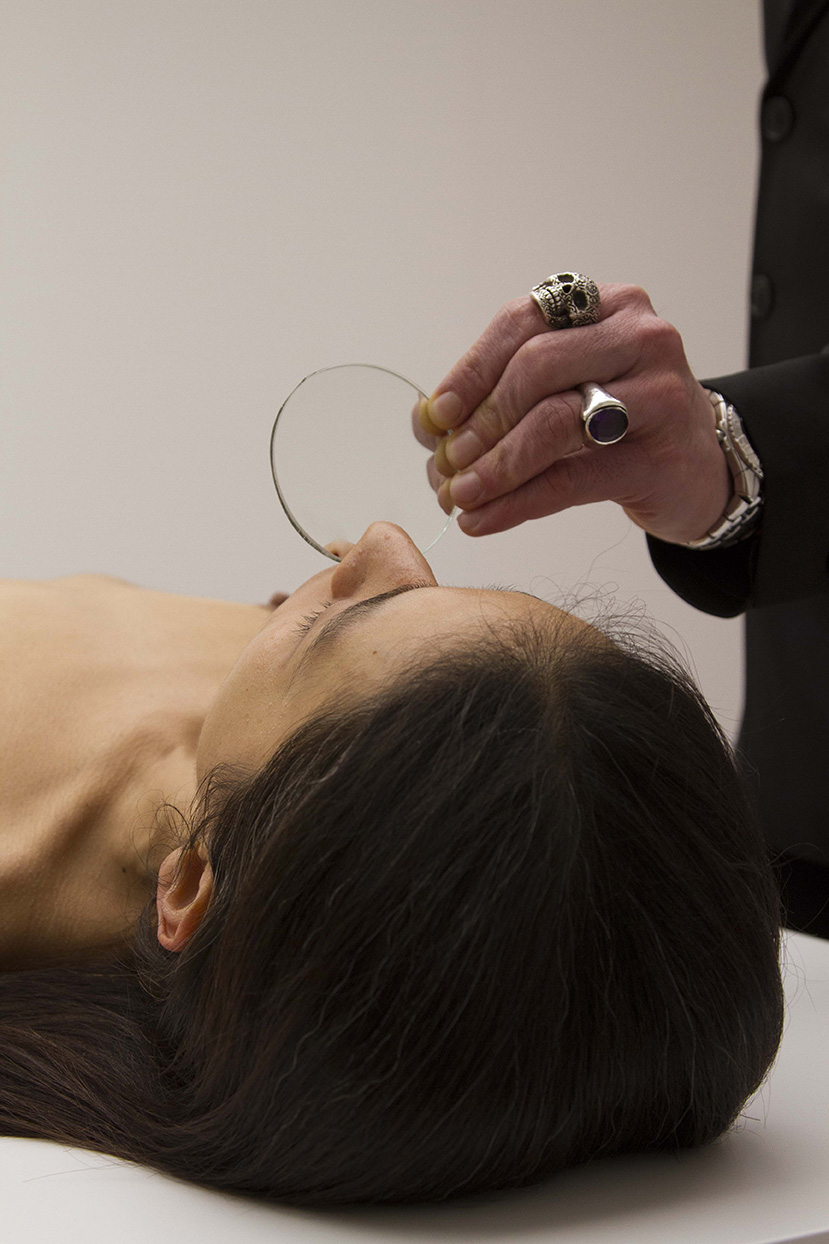Regina José Galindo
Mechanisms of Power
2016
Frankfurter Kunstverein, Germany
In Mechanisms of Power, the Frankfurter Kunstverein presented two monographic exhibitions of Guatemalan Regina José Galindo and Italian Arcangelo Sassolino. This show was the first anthological of both artists in a German institution.
Depending on different subject matters and marked by distinct practices, both artists’ approaches share the exploration of the limitations of art and question art’s role in our society. They refuse to be reduced to a merely symbolic realm and confront their conceptual ideas with social or material realities. While the effects of physical violence and power relations on the body, both the individual and the collective, are a central issue of Galindo’s uncompromising performances.
Starting material of the works by Regina José Galindo is her own body, which she utilises critically and politically. In her performances, which are documented in photographs and videos, she exposes herself to extreme physical and mental situations. The viewer can sense fear, pain and agony, which call upon a sensation of powerlessness. During her early years of artistic production, Regina José Galindo mainly dealt with the socio-political context of her home country Guatemala, that is shaped by a long-lasting civil war and ensuing political instability. Subsequently, Galindo’s works investigate the universal and ethical repercussions of social injustice, discrimination or shortcomings evoked by different power relations. With explicit images, she addresses existential border-line experiences like violence and power, life and death as well as loss and grief. Galindo’s politically motivated art focuses on the fight for women, who became victims of brutal crimes starting with the violent phase of the civil war in Guatemala. By using her body as a metaphorical substitute for those women’s bodies, the effects of political violence through power structures become tangible.
The exhibition displays both current artworks and a significant selection of oeuvres realised in the last fifteen years. Also, Regina José Galindo acted A State Secret (Secreto de Estado) a performance specifically conceived for Frankfurter Kunstverein.

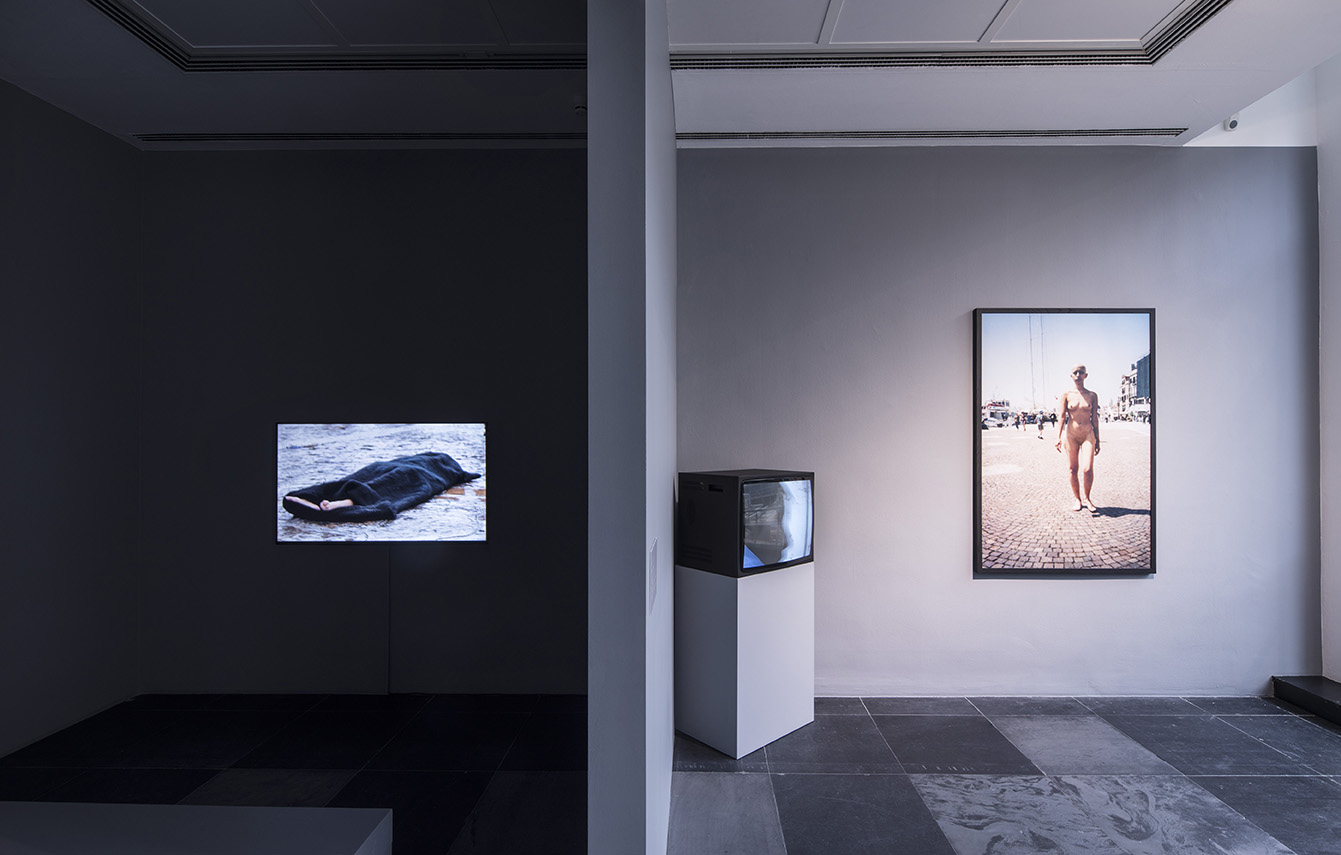
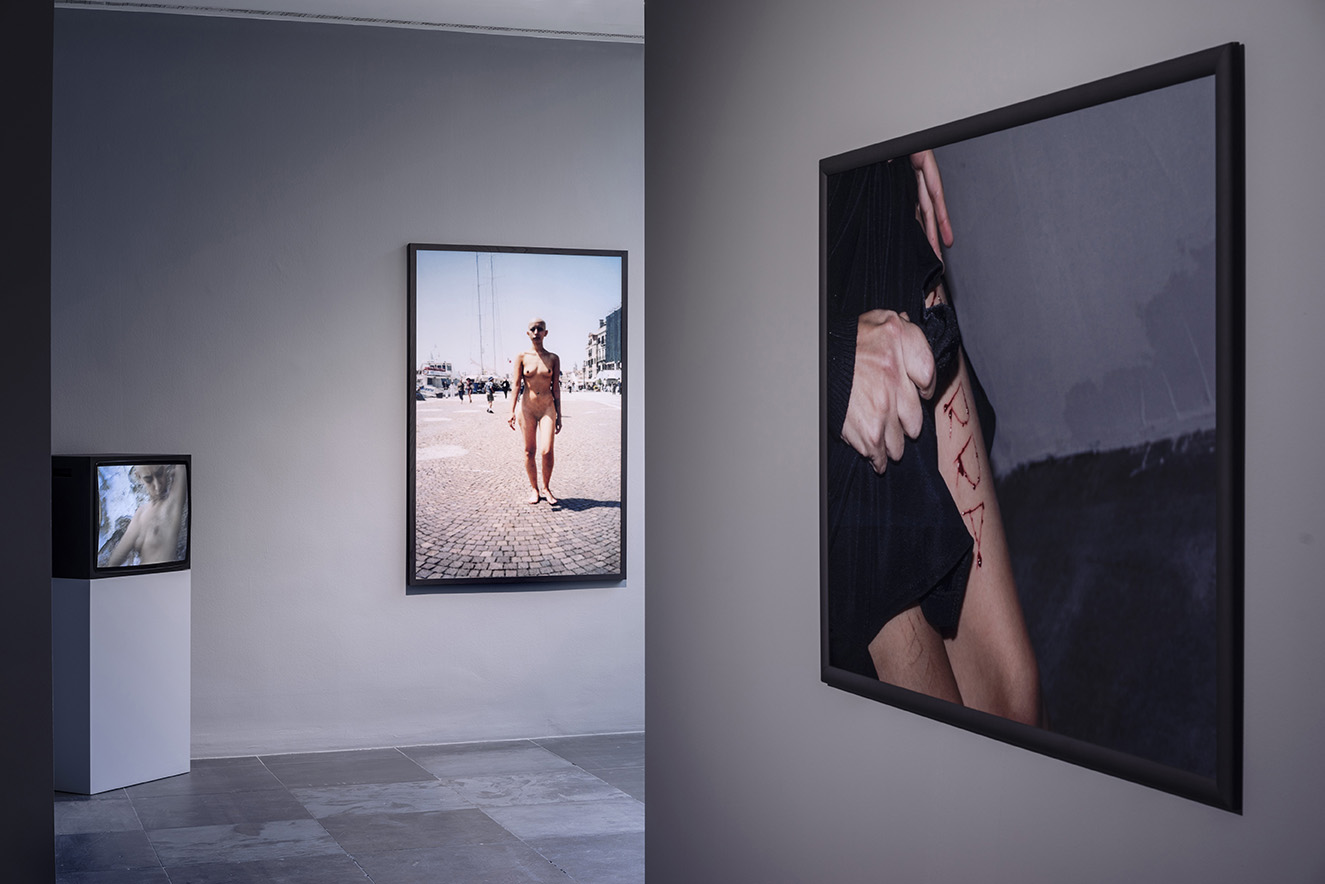
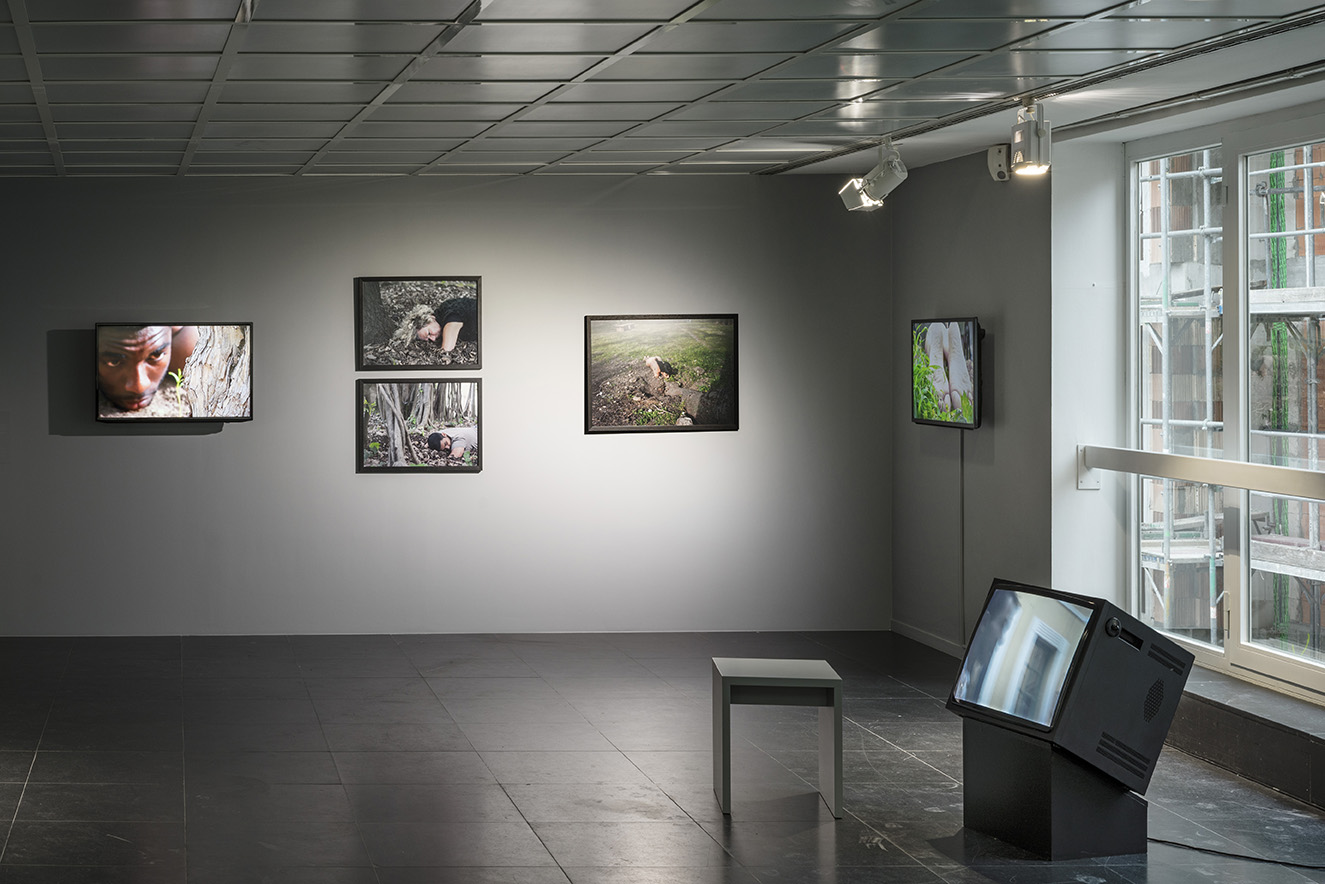
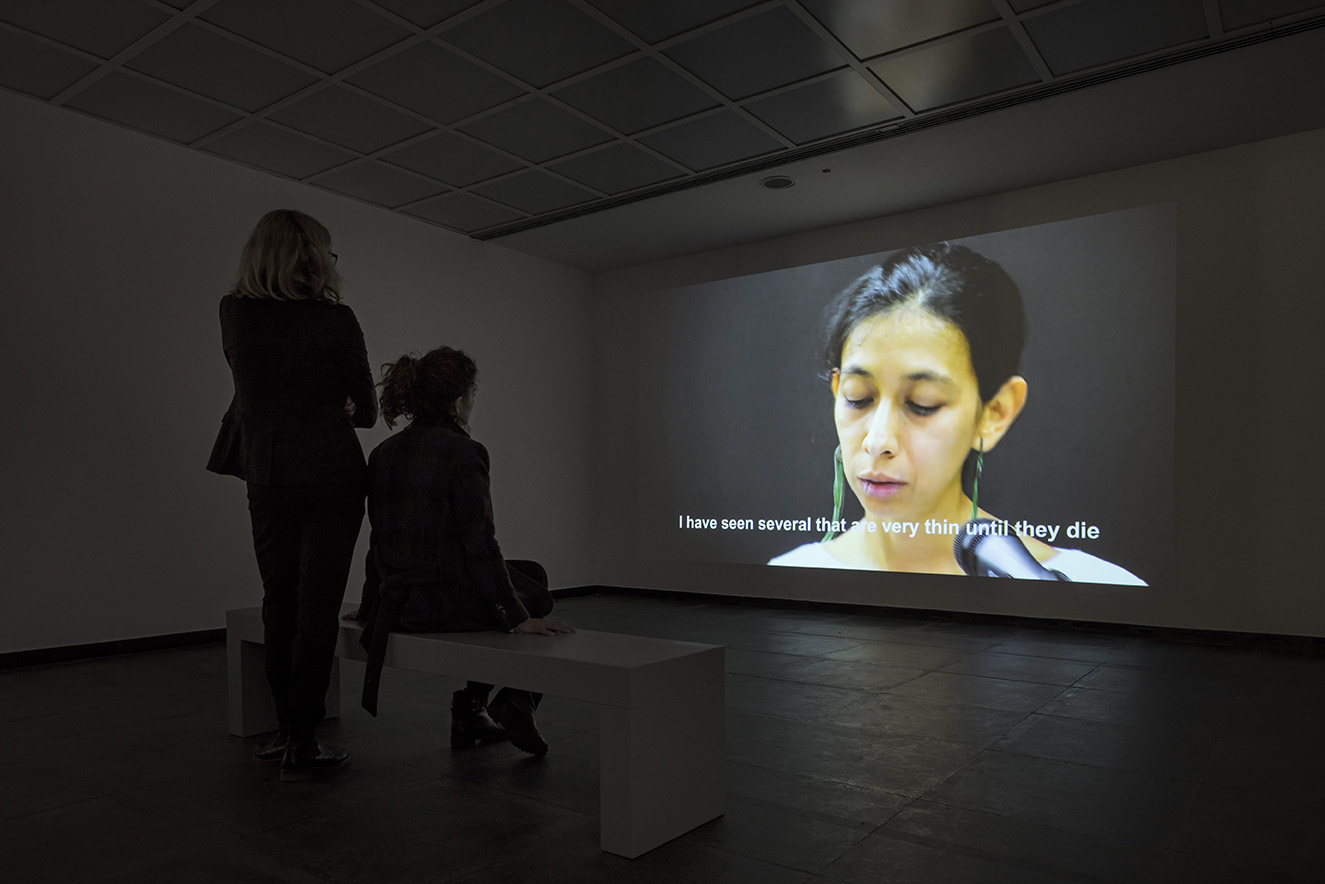

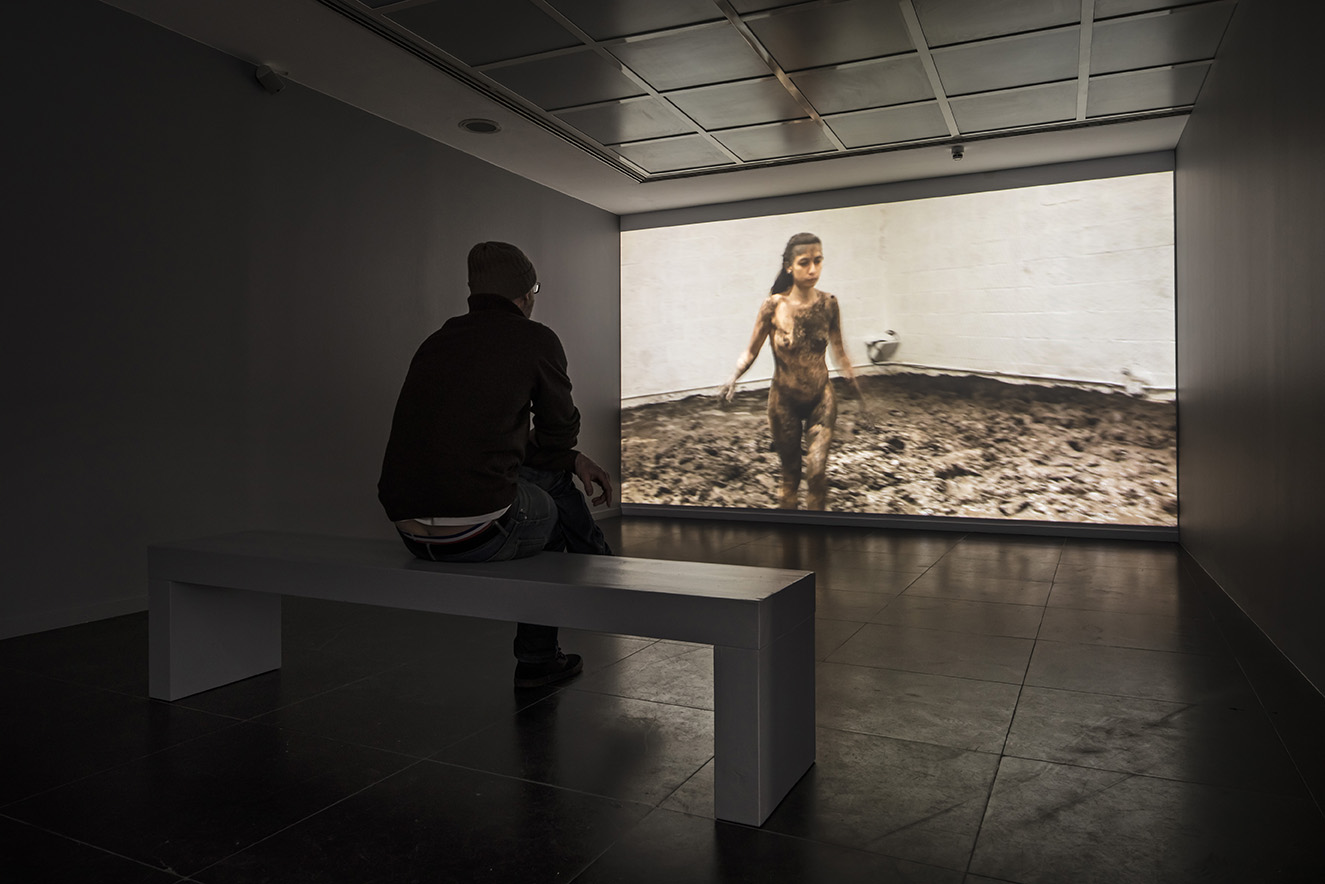
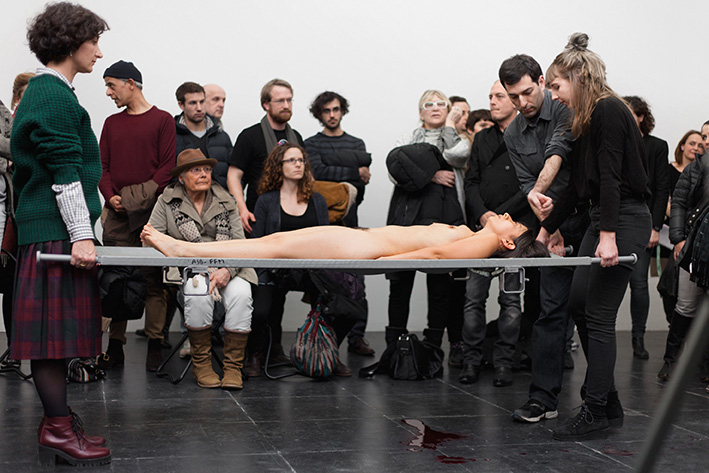
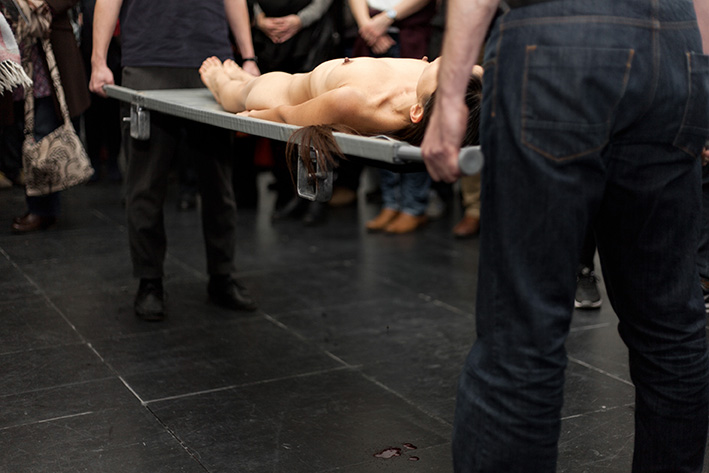

Estoy Viva
2014
PAC | Pavilion of Contemporary Art , Milan, Italy
In a crowded Pavilion of Contemporary Art during the Opening evening on 24th March, Regina José Galindo performed Exhalación (estoy viva) [Exhalation (I'm alive)], a new intense and poetic action, suspended between life and death.
The new performance was conceived for the exhibition Estoy viva, the first and most complete – exhibition of Regina José Galindo’s artworks ever done before. An entirely white room was specially constructed in the ground floor of the Pavilion in Milan. Inside, behind a closed door, Regina José Galindo lied naked, on a sort of tombstone. The temperature was low, as in a morgue. One person at a time had access to the artist. A mirror was given to each person: placing it close to Galindo’s nostrils, the visitors were able to carry away her breath clouding on the surface, the only sign that contradicted all the symptoms of apparent death.
Regina José Galindo (Guatemala City, 1974) is one of the most representative artists of the magmatic Latin American continent. She uses her body politically and critically, as a tool for reawakening the removed traumas, the torments of the memories, and the ruins of history.
She creates uncomfortable works, often brutal, where her tiny body, apparently fragile, is exposed to a series of public actions using the metaphorical space given by art to denounce the ethical implications of social and cultural injustices, discriminations of race and sex, and, more in general, all kinds of abuses stemming from power.
Galindo explores her body, turning it into a tool of symbolic recall of events that involve the collective body, the so-called “social body”.
Suspended between life and death, Galindo experiences fear, anguish and their consequences, taking in her own body the physical and psychological risk, up to almost intolerable situations. Her radical and dramatic actions always focus on surprisingly critical events and become a way to redefine, one more time, the feeble boundaries between art and life.
Estoy viva is divided into five sections, conceived as permeable categories interconnected: Politics, Woman, Violence, Organic and Death. Five macro thematic emergencies present an open view over the artistic experience of Regina José Galindo. An itinerary builds through short circuits and slippage, from the origins till today, where some of her best known and symbolic actions such as ¿Quién puede borrar las huellas? (Who can erase the traces?, 2003), Himenoplastia (2004), Mientras, ellos siguen libres (While they are still free, 2007) and Caparazon (Shell, 2010) are presented side by side with more recent works never seen before in Italy such as Marabunta and Joroba (Hump, 2011), Descensión (Descent, 2013) or La Verdad (The Truth, 2013).
The research of Regina José Galindo focused on subjects connected with violence, rights privation and individual freedom, involves both men and women of every continent. For this reason, the exhibition supported with a donation ticket Amnesty International, the independent, self-financed, non-governmental Organization that since 1961 defends human rights wherever they are violated.
